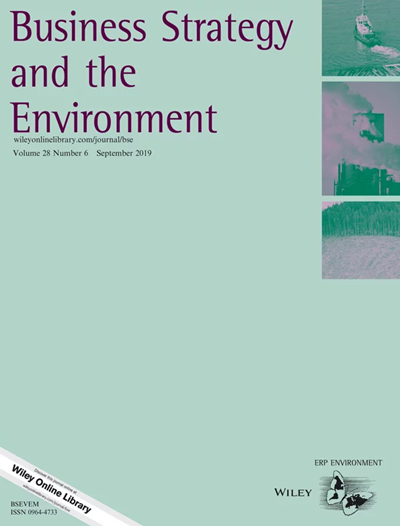An Integrated Business Strategy for the Twin Transition: Leveraging Digital Product Passports and Circular Economy Models
IF 13.3
1区 管理学
Q1 BUSINESS
引用次数: 0
Abstract
Companies face significant challenges in implementing digital transformation, often because of the use of fragmented strategies and limited cross‐functional coordination. Furthermore, not all digital innovations align with sustainability objectives. In response to this complexity, recent European Union directives have introduced digital product passports (DPPs) as strategic instruments to bridge the gap between digitalization and sustainability. Although promising, DPP implementation remains in its infancy and requires robust data governance to mitigate the risk of information overload. The present study integrates business perspectives into the design of DPPs, with a particular focus on the textile industry. It explores how DPPs can enhance competitiveness, facilitate sustainability monitoring, and promote circularity. Drawing on insights from textile firms and consulting support, this research employs multicriteria decision‐making methodologies—specifically, the analytic hierarchy process (AHP) and the technique for order of preference by similarity to ideal solution (TOPSIS). The findings reveal a strong alignment between these methodologies and a shared recognition of the strategic value of DPPs, particularly in facilitating access to information on product reuse, repair, and recycling. Additionally, the analysis highlights consultants' emphasis on the “Made in Italy” designation as a key differentiator. Overall, DPPs are shown to advance the development of circular business models in the textile sector by supporting three strategic priorities: material traceability, repair guidance, and optimized recycling pathways.双重转型的综合商业战略:利用数字产品护照和循环经济模式
企业在实施数字化转型时面临着重大挑战,这通常是因为采用了分散的战略和有限的跨职能协调。此外,并非所有数字创新都符合可持续发展目标。为了应对这种复杂性,最近欧盟指令引入了数字产品护照(dpp)作为弥合数字化与可持续性之间差距的战略工具。尽管前景光明,但DPP的实施仍处于起步阶段,需要强大的数据治理来减轻信息过载的风险。本研究将商业视角整合到dpp的设计中,并特别关注纺织行业。它探讨了dpp如何提高竞争力、促进可持续性监测和促进循环。借鉴纺织企业的见解和咨询支持,本研究采用多标准决策方法,特别是层次分析法(AHP)和理想解决方案相似性偏好排序法(TOPSIS)。研究结果表明,这些方法与对dpp战略价值的共同认识之间存在强烈的一致性,特别是在促进获取产品再利用、维修和回收信息方面。此外,该分析还强调,咨询公司强调“意大利制造”是一个关键的差异化因素。总体而言,dpp通过支持三个战略重点:材料可追溯性、修复指导和优化回收途径,推动了纺织行业循环商业模式的发展。
本文章由计算机程序翻译,如有差异,请以英文原文为准。
求助全文
约1分钟内获得全文
求助全文
来源期刊

Business Strategy and The Environment
Multiple-
CiteScore
22.50
自引率
19.40%
发文量
336
期刊介绍:
Business Strategy and the Environment (BSE) is a leading academic journal focused on business strategies for improving the natural environment. It publishes peer-reviewed research on various topics such as systems and standards, environmental performance, disclosure, eco-innovation, corporate environmental management tools, organizations and management, supply chains, circular economy, governance, green finance, industry sectors, and responses to climate change and other contemporary environmental issues. The journal aims to provide original contributions that enhance the understanding of sustainability in business. Its target audience includes academics, practitioners, business managers, and consultants. However, BSE does not accept papers on corporate social responsibility (CSR), as this topic is covered by its sibling journal Corporate Social Responsibility and Environmental Management. The journal is indexed in several databases and collections such as ABI/INFORM Collection, Agricultural & Environmental Science Database, BIOBASE, Emerald Management Reviews, GeoArchive, Environment Index, GEOBASE, INSPEC, Technology Collection, and Web of Science.
 求助内容:
求助内容: 应助结果提醒方式:
应助结果提醒方式:


